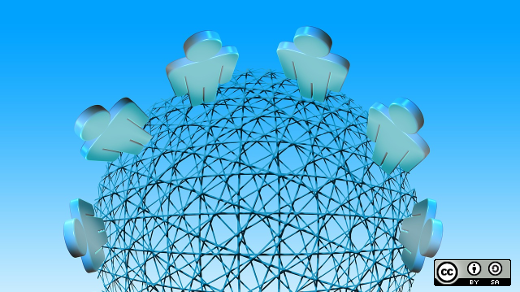Becoming a QA Engineer for OpenStack was a career shift for Emily Wilson who has a background in research microbiology. But there's an odd similarity between the two careers—they both involve figuring out what makes complicated systems work and where the weak points are. Paradoxically, this requires both a big picture perspective of a system, as well as an in-depth understanding of how the individual components function.
At the OpenStack Summit in Barcelona later this month, Emily is giving a presentation on her first year working in the OpenStack community. In this interview, she talks to me about contributing to a large and complex project like OpenStack.

What could be done to make it easier for new community members to join OpenStack?
I found IRC extremely useful, both for more immediate assistance with questions and for keeping a finger on the pulse of the community.
By spending time in any of the channels, one can quickly get an idea of what particular problems and goals the community has for a particular project. The same is also true to the numerous OpenStack mailing lists. It's key to make people who are interested in contributing to the OpenStack community aware of these resources and connecting them with potential mentors.
While I did not go through official mentorship channels, there were several members of my team who were already heavily involved in the upstream community. It was extremely useful to have these individuals easily accessible to help guide me through the process and to give me pointers in terms of where to start and how my talents could be applied to help the community.
How can we better connect people with resources like OpenStack documentation?
The wiki "Getting Started" page was extremely useful to me when I was first starting out. It was useful to have everything laid out for me in terms of which accounts were needed, an overview of how the review processed worked. Having all this information in one place makes it easier for people to know exactly what needs to be done to contribute to the community.
An additional challenge when entering the community is the complexity and scale of OpenStack. Depending on the technical background of an individual, it can be intimidating to navigate the different projects and to figure out where their skills can be best utilized. The organization of the project navigation page is slick and visually appealing, but does not necessarily provide potential new contributors with the information they need.
What role can companies working with OpenStack play in helping their developers get familiar with the upstream community?
One of the most important things a company working with OpenStack can do is encourage and facilitate participation in the community. When a company has a strong presence in the upstream community, it becomes much easier for their developers to onboard. Something as simple as cross-linking the "Getting Started" page within their company wikis can help developers discover the resources that already exist within the community. Encouraging participation in the upstream design of OpenStack helps developers get a sense of investment in the larger community, and encouraging attendance to meet-ups can help give them a good sense of the scope of the community and of OpenStack.
What are you interested in learning about at OpenStack Summit Barcelona this year?
My favorite part of this year's past Summit was the Design Summit, so I'm looking forward to that again.
I think the most exciting part of the OpenStack community is the ability of community members to hammer out how the community thinks new features should be implemented, and I look forward to contributing again this year.






Comments are closed.